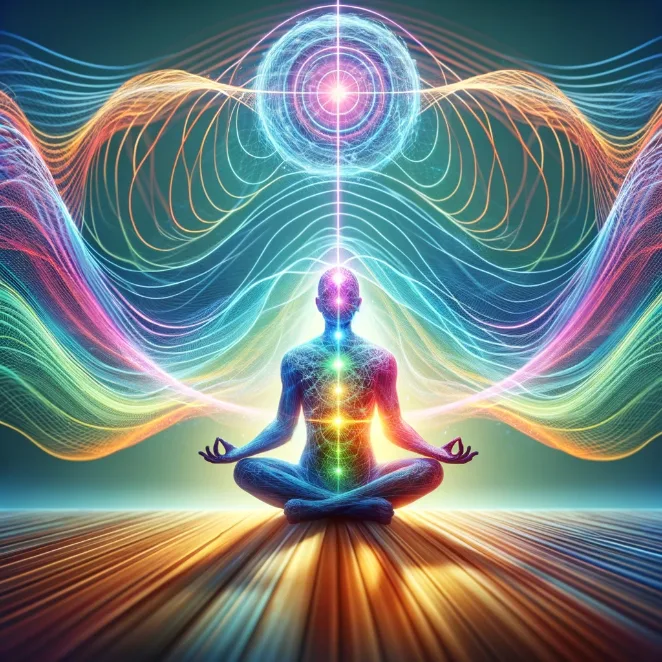
Mastering Your Biorhythm Chart
Discover the subtle yet powerful influence of biorhythms on your daily life through this insightful guide. Learn to interpret your biorhythm chart, a tool that maps your personal energy cycles in physical, emotional, and intellectual spheres.
article by Adrian Wallace
Deciphering the Chart
A biorhythm chart is a complex yet intriguing tool that maps out your personal energy cycles based on three critical lines: physical, emotional, and intellectual. These lines, representing distinct rhythms, are displayed in wave-like patterns that oscillate above and below a central horizontal line. This baseline is crucial as it represents the average or equilibrium state. When the cycles' lines are above this baseline, they signify a high phase, indicative of stronger abilities in that specific area. Conversely, lines below the baseline suggest a low phase, where one might experience reduced capacities. The visual nature of the chart makes it an accessible tool for quickly ascertaining your current phase in each cycle. This visual guidance is key in planning your daily activities and long-term schedules, offering a unique perspective on your personal energy ebbs and flows.
Detailed Tips for Chart Interpretation
1. Initial Setup: To begin interpreting your chart, mark your birth date as the starting point. Each cycle (physical, emotional, intellectual) has a fixed duration – 23, 28, and 33 days respectively. Calculate these cycles from your birth date to the present date to determine your current position in each cycle. This calculation lays the foundation for understanding your unique energy patterns and planning accordingly.
2. Reading the Phases: The next step is identifying the phases of each cycle. High phases are indicated by the cycles' lines being above the baseline, signifying strength and peak performance. Low phases are marked by lines below the baseline, indicating a need for caution, rest, or reduced expectations. This phase identification is crucial in understanding how to approach different aspects of your life during these periods.
3. Planning Activities: Your chart can be a powerful tool for aligning your activities with your natural energy rhythms. For example, schedule physically demanding tasks or exercise during high phases of your physical cycle. Similarly, times of peak intellectual cycle can be optimal for challenging mental tasks or decision-making. This alignment can lead to improved performance and satisfaction in your undertakings.
4. Emotional Awareness: The emotional cycle is particularly important for managing your social interactions and personal well-being. High emotional days can be ideal for engaging in social activities, tackling emotional tasks, or having important conversations. During low emotional days, it might be wise to seek solitude or engage in activities that require less emotional investment. This awareness can enhance your emotional intelligence and interpersonal relationships.
5. Cross-Cycle Analysis: It's also essential to consider days when multiple cycles align, either at high or low points. These alignments can create days of significant energy or challenge. For instance, a day when all three cycles are high might be perfect for tackling a big project or hosting an event. Conversely, a day with all cycles low might be a good time for rest and minimal activity.
6. Future Planning: Extending your chart into the future, based on the cycles’ durations, allows you to plan ahead effectively. This foresight can be particularly useful for scheduling important events, commitments, or personal goals. For example, if you’re planning a vacation, you might schedule it during a time when your physical and emotional cycles are high to ensure maximum enjoyment.
7. Adapting to Variability: While these cycles provide a guide, it's important to remember they are not absolutes. Each individual’s experience can vary, and personal intuition should also play a role in decision-making. Flexibility and adaptability are key in effectively utilizing your biorhythm chart.

Practical Application
1. Fitness Regimen: Aligning your workout intensity with your physical cycle can lead to more effective training and reduced risk of injury. For example, plan high-intensity workouts during your physical high phase and more restorative activities like yoga during low phases.
2. Work Projects: Scheduling demanding work projects or critical meetings during high intellectual phases can enhance your cognitive performance, leading to better outcomes and decision-making.
3. Emotional Well-being: Planning social events or therapy sessions during high emotional cycle phases ensures you are in the best state for these interactions. It can also be a good strategy to avoid emotionally taxing situations during low phases.
4. Holistic Approach: Considering all three cycles when planning any significant event or decision ensures a balanced approach. This holistic view can lead to improved overall satisfaction and effectiveness in various aspects of life.

By using a biorhythm chart, you can gain a new level of insight and control over your daily life and long-term planning. Aligning your activities with your natural rhythms can enhance effectiveness, emotional well-being, and mental clarity. While the chart is a helpful tool, it's not a strict rulebook. With practice and flexibility, you’ll find a rhythm that harmoniously blends your activities with your personal energy cycles, paving the way for a balanced and fulfilling lifestyle.
Published: 11/16/2023
Modified: 11/16/2023
More predictions
Come back here soon to learn more about yourself and your future


Exploring Your Future: The Power of Biorhythms
Discover how biorhythms can reveal your personal life cycles and impact your daily living in this insightful article.


Navigating Life with Biorhythms: A Comprehensive Guide
Explore the intriguing world of biorhythms and the role they play in understanding relationship compatibility in this insightful article.


Astro-Biorhythms: Cosmic Patterns and Life Cycles
Step into the intriguing world where the mysteries of the cosmos meet the rhythms of our own biology. In this exploratory article, we delve into the synergistic relationship between astrology and biorhythms, two fascinating domains that offer profound insights into human nature and the tapestry of life. Uncover how the alignment of stars and the rhythmic cycles within us interweave to shape our experiences, providing a unique perspective on navigating life's journey.